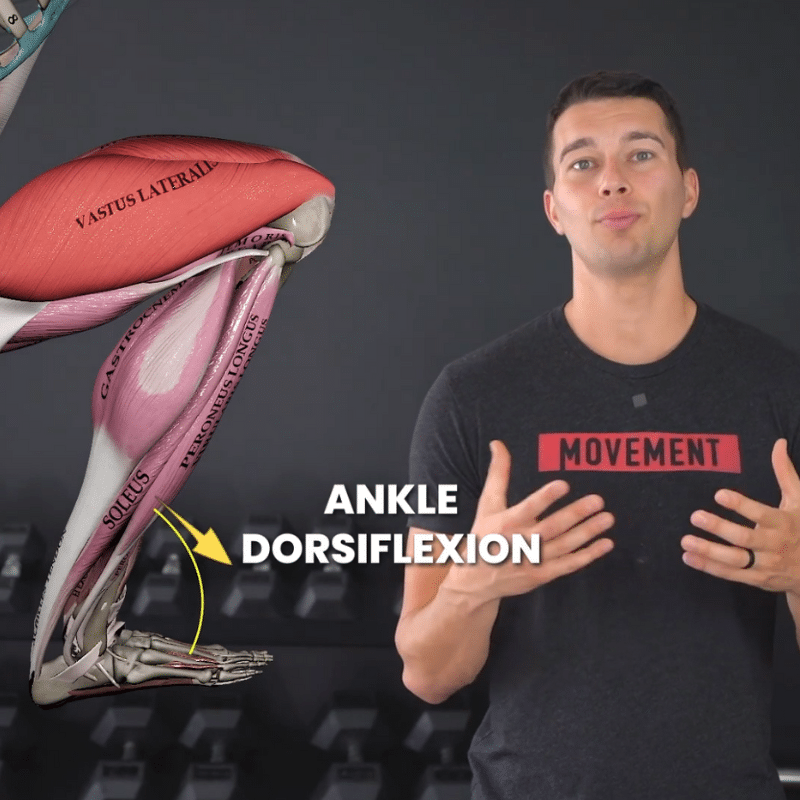Ready to Take Your Expertise to the Next Level? Coming soon from Muscle and Motion, in collaboration with Dr. Matt Casturo, DPT, CSCS: The Anatomy and Biomechanics of Movement – a groundbreaking course designed to equip fitness professionals, coaches, and therapists with in-depth knowledge of how the body moves and functions.
Why this course is a game-changer
Most anatomy courses still teach the body as a list of muscles to memorize—origins, insertions, and isolated actions. But real human movement isn’t about memorization. It’s about integration, context, and understanding how everything works together in motion.
The Anatomy and Biomechanics of Movement course shifts the focus from static knowledge to dynamic application. Instead of simply learning where a muscle is, you’ll explore how it functions within real-life movement, how joints interact, and how the nervous system influences performance. You’ll gain the tools to identify movement patterns, spot compensations, and build effective programs tailored to each client’s needs.
What truly sets this course apart is the powerful combination of Dr. Matt Casturo’s clear, practical explanations and the 3D animations by Muscle and Motion. These visuals don’t just illustrate anatomy, they bring it to life. Complex biomechanical concepts suddenly become clear and intuitive. You’ll see precisely how the scapula moves during overhead motion, how force transfers through a squat, and how muscles coordinate during functional tasks.
This course teaches more than facts–it teaches you how to think critically, assess movement with purpose, and make smarter coaching and rehab decisions. If you want to bridge the gap between theory and practice and truly master the science of movement, this course is your next step.
What you’ll learn
- Joint mechanics: Understand osteokinematics and arthrokinematics to analyze how joints truly function during movement.
- Open vs. closed chain exercises: Know when to use isolation versus integrated movement strategies and why both have a place.
- Muscle contraction types: Apply concentric, eccentric, and isometric loads to enhance strength, control, and injury prevention.
- Movement patterns: Dive into pressing, pulling, squatting, and hinging–understanding not only what works, but why.
- Movement cues: Utilize both local and global cues to enhance client technique and movement efficiency.
Planes of motion: Learn to program across sagittal, frontal, and transverse planes for balanced, functional strength.
A taste of the methodology: How this course changes the way you think
Once you’ve built a strong foundation, the course takes it further, guiding you into an advanced coaching mindset:
- Learn to adjust training stress based on nervous system load: a back squat may stimulate more neural drive than a leg extension, but sometimes, the lighter load is the right choice.
- Know when to adjust movement complexity, reducing or increasing it as needed, based on client readiness, fatigue, or injury history.
- Understand how stiffness can protect–but also limit: You’ll learn how to identify chronic areas of tension (e.g., stiff peroneals post-ankle sprain) and how to address them with the right blend of mobility and strength training.
- Think locally and globally: Understand how a cue like “chest up” can lead to lumbar extension, while “exhale and reach” might promote cleaner scapular motion. You’ll gain the tools to see the whole picture and adjust with precision.
Who is this course for?
- Personal trainers: Gain the skills to assess movement quality, modify exercise selection, and correct compensatory patterns that limit client progress. Learn how to refine exercise technique and apply targeted corrective strategies to address mobility, stability, and strength imbalances. This knowledge empowers you to create personalized, results-driven programs.
- Therapists: Develop the expertise to design effective rehabilitation programs that address stiffness, instability, and motor control deficiencies. Discover how to restore mobility, enhance neuromuscular control, and gradually reintegrate functional movements, enabling clients to return to pain-free activity.
- Coaches: Enhance neuromuscular control and improve rate of force development to optimize athlete performance. Learn how to refine movement efficiency, build explosive power, and tailor sport-specific programs that maximize strength, agility, and resilience on the field.
- Yoga and pilates instructors: Deepen your understanding of mobility, alignment, and functional strength to refine movement patterns and prevent injury. Learn to balance mobility and stability while improving postural alignment, ensuring your clients develop the strength and control necessary to support long-term movement efficiency.
Ready to Take Your Expertise to the Next Level?
Join thousands of professionals who are redefining their approach to movement science.
The Anatomy and Biomechanics of Movement course is coming soon, designed to take your coaching, training, and therapeutic skills to the next level through a deeper, science-based understanding of how the body moves and functions.
This powerful new course joins our library of expert-led education at Muscle and Motion, created to help professionals master the science of movement.
At Muscle and Motion, we believe that knowledge is power, and understanding the ‘why’ behind any exercise is essential for your long-term success.
Let the Strength Training App help you achieve your goals! Sign up for free.


